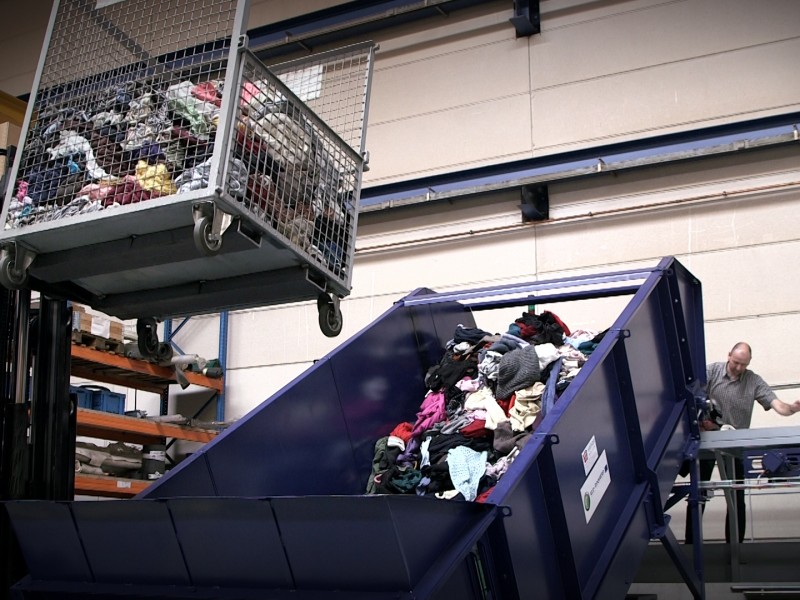From mixed rags to uniform, high-value raw materials
In the linear economy, huge amounts of valuable fabric are simply discarded as waste or down-cycled during textile recycling processes. This wasteful practice can be radically changed by Fibersort. This innovative technology automatically sorts mixed garments into homogeneous categories of up-front specified fiber types.
Fibersort is an optical sorting technology based on Near Infrared Spectroscopy. The technique is sensitive to the molecular absorptions of organic constituents in the near infrared part of the spectrum. Since all clothes have organic constituents, there is no limit to the types of fabric that can be recognized and sorted into uniform categories of fibers with specified compositions, colors and/or structures.
Sorting 900 kilo of post-consumer textiles per hour
Automated sorting technologies could enable the industry to turn non-rewearable textiles that currently have no other destination than downcycling, landfill or incineration into valuable feedstock for textile-to-textile recycling. One of these technologies is the Fibersort, a Near Infrared (NIR) based technology able to categorize textiles in 42 different fractions based on their fiber composition, structure and color. Over the past years, the technology has been optimized, tested and validated to prepare it for commercialization. Fibersort is now able to sort ~900 kgs of post-consumer textiles per hour.

